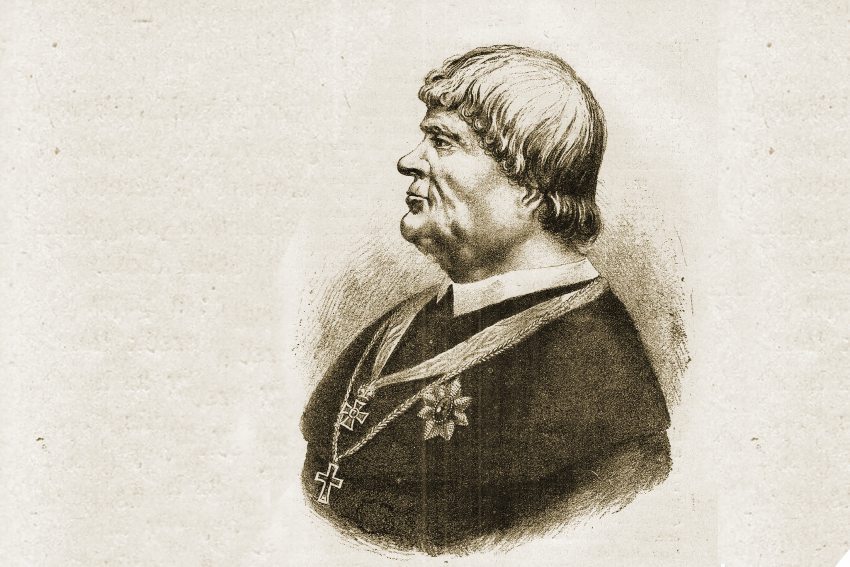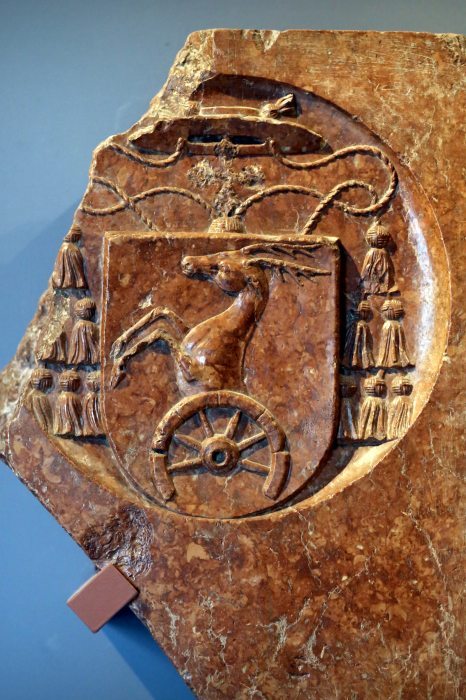The serf who almost became Pope - the life of Tamás Bakócz
The greatest figure of the medieval Hungarian church, he went from a serf boy to a true Renaissance prince of the priesthood. Tamás Bakócz is also the link between Hungary's heyday and its tragedy that quickly followed.

Tamás Bakócz was born in 1442 in Erdőd in Eastern Hungary, in a serf family. His father was a wheel-making craftsman, who was able to educate his sons with church support. Bakócz did not later deny his lowly origins, as he added wagon wheels to his coat of arms. His brother, Bálint, won a benefice as a young man so that he could help his younger brother, who had entered the Dominican Order, to study. Bakócz, or Tamás Erdődi as he appears in the school registers, was a schoolboy in Szatmár and completed his studies at the Breslau and Padua studium generale. In 1464 he became a Master of Philosophy at the University of Krakow, where many Hungarian students attended and spent the following years at the University of Ferrara in Italy. After returning home in 1470, he was appointed to the royal chancellery as a clerk. His career took off from 1480. It was then that his brother gave him the provostship in Titel, and after giving advice to King Matthias during his western campaign, the king took notice of his talents and made him his secretary. He was subsequently appointed royal adviser and vice-chancellor, and in 1486, again by the Emperor's favour, he was awarded the bishopric of Győr.
He accompanied the King on his campaigns, managed the diplomatic affairs of the country, and was part of the Renaissance spirit that permeated King Matthias' court after his marriage to Beatrix of Aragon, Princess of Naples.
When the king died in 1490, Bakócz, after some vacillation, helped to elect the Polish king, Wladyslaw II, and in international politics, he championed the cause of the great war against the Turks, which meant that he also supported the ambitions of the Republic of Venice, which was interested in the same.
Properties, titles, connections
In 1490, the year Wladyslaw II ascended to the throne, he appointed the forty-eight-year-old Bakócz, who was by then one of the richest and most influential people in the country, as chancellor-general. His accumulation of wealth was an eyesore to many. Those envious of him had him described as the country's 'most unscrupulous orphan' since many of his estates were acquired by adoption or by inheritance contract. In 1497 he exchanged the bishopric of Győr for the more important and wealthier bishopric of Eger, but he still possessed many other ecclesiastical titles and estates. In the same year, with the approval of the Emperor and the Pope, he exchanged the bishopric of Eger for the archbishopric of Esztergom, previously held by the young Hippolito d'Este, nephew of Queen Beatrice, the widow of King Matthias. With this exchange, Bakócz became the head of the Hungarian Church. In 1500, as a Hungarian archbishop with the support of Venice, he was granted the title of cardinal by Pope Alexander VI.
He was also highly respected in Rome: he was regarded as an influential high priest, a supporter of European unity against the Turks, a true Renaissance lord.
In 1510, Pope Gregory II made him Patriarch Emeritus of Constantinople. It was a mere title since Constantinople had been under Turkish rule for almost a century, but its holder was among the most prestigious of the cardinals. At home, alongside the weak-handed king Wladyslaw II, Bakócz ruled the country's affairs with almost absolute power after 1500. The great chance of the life of the cardinal who was already in his seventies came in 1513, after the death of Pope Julius II.
The candidate for the papacy
He arrived in Rome for the conclave with great pomp and splendour, as the heir-apparent to the papal throne. But the cardinals, who were mostly from Italy, had no interest in electing a cardinal who intended to use the authority and wealth of the Church to launch a war against the Turks, defend the southern Hungarian frontiers, reconquer the Balkans and Constantinople, and expel the Turks from Europe. This decided the fate of Bakócz. The Italian cardinals were more interested in the peace of Italy, in preserving the Renaissance splendour of the Curia and in winning over the Medici family than in risky and expensive campaigns in the Balkans.
Thus, although Bakócz initially received votes, the majority voted for an Italian candidate, the still young Cardinal Giovanni de' Medici of Florence, in his late thirties, who chose the name, Leo X. The new Pope, who was the son of the legendary Renaissance prince of Florence, Lorenzo de' Medici, felt he had to make amends to his losing opponent, Bakócz, who had left the conclave in defeat. So he sent the Archbishop of Esztergom home with an appointment as papal legate and the authority to declare a crusade. On his return to Hungary, the Cardinal did indeed declare a crusade, but in 1514 the disobedient serfs gathered under the sign of the cross, led by a Szekler nobleman named György Dózsa, turned against their own masters instead of the Turks.
The Hungarian notables managed to quell the bloody peasant war that broke out only with brutal severity, and the Archbishop subsequently received many untruthful reproaches from them for letting the spirit of rebellion out of the bottle.
He must also have taken it as a personal insult that the noblemen of the Parliament, in their anger, decided that in the future no descendant of the serfs could be appointed a bishop or archbishop.
The Crusade was dropped from the agenda, and a decade later, in 1526, a weakened and abandoned Hungary suffered a fatal defeat at Mohács from the hands of the Sultan. Tamás Bakócz did not live to see this tragedy, suffering a stroke in 1519. He retired to Esztergom, where he died in 1521, aged seventy-nine. Here he was laid to rest in the red marble Bakócz Chapel of the Cathedral, the finest work of his Renaissance artistic patronage, built with Italian masters and one of the jewels of the Hungarian Renaissance.
Bakócz was a child of his time: a Renaissance high priest who loved power and pomp, who raised his family from the serfs to the Hungarian aristocracy, and did his best to unite Europe against the Turkish conquest and to save the country. Until the end of the 20th century, he was the only Hungarian mentioned by his contemporaries as a contender for the papal throne.








